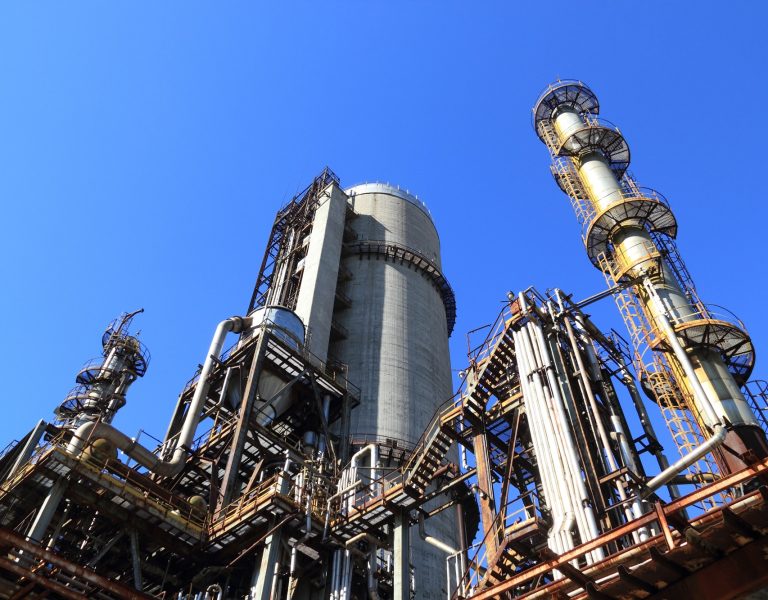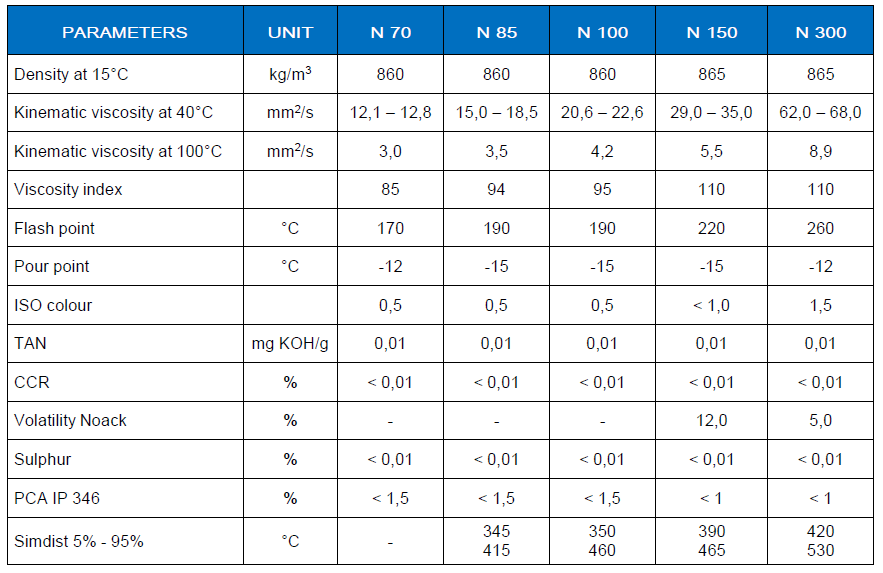We are trading in - Base Oil N7, N85, N150, N300
Base oils are used to manufacture products including lubricating greases, motor oil and metal processing fluids. Different products require different compositions and properties in the oil. One of the most important factors is the liquid’s viscosity at various temperatures. Whether or not a crude oil is suitable to be made into a base oil is determined by the concentration of base oil molecules as well as how easily these can be extracted.
Base oil is produced by means of refining crude oil. This means that crude oil is heated in order that various distillates can be separated from one another. During the heating process, light and heavy hydrocarbons are separated – the light ones can be refined to make petrol and other fuels, while the heavier ones are suitable for bitumen and base oils.


There are large numbers of crude oils all around the world that are used to produce base oils. The most common one is a type of paraffinic crude oil, although there are also naphthenic crude oils that create products with better solubility and very good properties at low temperatures. By using hydrogenation technology, in which sulfur and aromatics are removed using hydrogen under high pressure, extremely pure base oils can be obtained, which are suitable when quality requirements are particularly stringent.
Chemical substances – additives – are added to the base oil in order to meet the quality requirements for the end products in terms of, for example, friction and cleaning properties. Certain types of motor oils contain more than twenty percent additives.
Specification of base OIL N 70 / N100 / N 150 / N300

Base Oil N70- Group 3
Group III base oils are subjected to the highest level of mineral oil refining of the base oil groups. Although they are not chemically engineered, they offer good performance in a wide range of attributes as well as good molecular uniformity and stability. They are commonly mixed with additives and marketed as synthetic or semi-synthetic products. Group III base oils have become more common in America in the last decade.
Base Oil N150
Grades – 60N , 70N 100N 150N and 250N named according to their viscosity(cSt) at 100 These products are very high VI base oils produced under all-hydro processing route (hydro cracking, wax hydro isomerization and hydro finishing). The isomerization process and severe hydro cracking and hydro finishing process almost completely removes impurities and saturates aromatics to only a traceable level. These base oils are also claimable as “synthetic” according to the ruling by the National Advertising Division (NAD) of the Council of Better Business Bureaus and have the following characteristics, which closely match conventional synthetics like PAOs.
Base Oil N60
Hydro processing and Refining Group II base oils are common in mineral based motor oils currently available on the market. They have fair to good performance in lubricating properties such as volatility, oxidative stability and flashfire points. They have only fair performance in areas such as pour point, cold crank viscosity and extreme pressure wear. Grades – 60N, 100N , 150N , 500N 600N and 150BS Manufactured by using hydro treating and Texaco’s MEK (Methyl-Ethyl-Ketone) de-waxing process. These oils are widely accepted in the industrial, marine and mechanic oils as well as in automotive engine oils.
